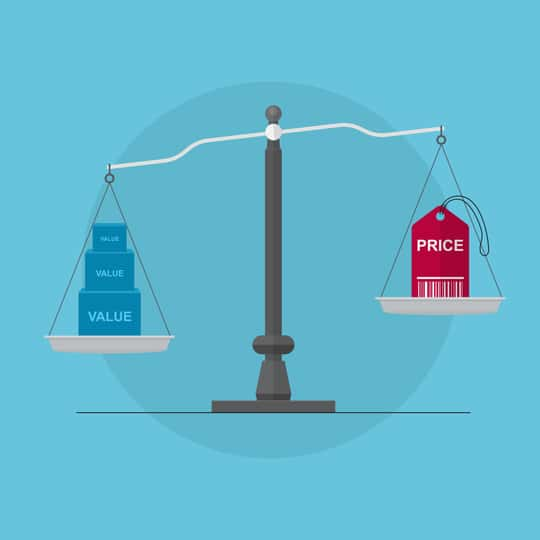JPMorgan Chase & Co. (JPM - Get Rating) and The Goldman Sachs Group, Inc. (GS - Get Rating) are two of the world’s most prominent banking companies. But their businesses have been hit hard by the coronavirus pandemic, with higher default rates, rate cuts, central bank asset purchases and the Fed’s dovish monetary policy.
However, promising coronavirus vaccine trial data and its eventual deployment has not only triggered a big increase in these banks’ share prices, but also helped push long-term interest rates higher to the banks’ benefit.
Both stocks have generated decent returns over the past five years. While JPM returned 112.8% over this period, GS gained 50.3%. However, in terms of year-to-date performance, JPM has lost 11.5% while GS returned 7.8%. So, which of these stocks is a better pick now? Let’s find out.
Business Structure and Latest Movements
JPM is a leading global financial services firm with assets of $3.2 trillion and operations in more than 60 countries worldwide. The firm is a leader in investment banking, commercial banking, and asset management. It operates in four segments – Consumer & Community Banking (CCB), Corporate & Investment Bank (CIB), Commercial Banking (CB), and Asset & Wealth Management (AWM).
JPM received results from the Federal Reserve for the 2020 Comprehensive Capital Analysis and Review (CCAR) Round 2 stress test on Friday. The firm’s Basel III Standardized approach minimum Common Equity Tier 1 (CET1) capital ratio remained at 11.3%, inclusive of the Stress Capital Buffer (SCB) requirement of 3.3%. Consequently, the company’s board has approved a new common equity share repurchase program of $30 billion.
GS is a leading global investment banking, securities and investment management firm that provides a wide range of financial services to a substantial and diversified client base that includes corporations, financial institutions, governments, and individuals worldwide. It functions in four segments – Investment Banking, Global Markets, Asset Management, and Consumer & Wealth Management.
GS also cleared the Fed’s CCAR last week, and issued a statement announced that it “intends to resume share repurchases next quarter.” Additionally, GS has recently invested $500 million in MaC Venture Capital I, a California-based seed stage venture capital fund, as a part of “Launch With GS.” In line with its commitment of more than $1 billion to small businesses since the start of pandemic, the firm funded an additional $250 million last week as part of the 10,000 Small Businesses program.
Recent Financial Results
In the third quarter ended September 30, 2020, JPM posted revenue of $29.9 billion, relatively stable compared to the year-ago quarter. This was primarily driven by a 21% year-over-year rise in the CIB sector. The company set aside $611 million as provision for credit losses to maintain its credit reserves at $34 billion. While average loans were up 1%, average deposits surged 30% year-over-year. EPS for the quarter came in $2.92, rising 9% compared to the year-ago quarter.
GS reported a top-line of $10.78 billion, growing 30% year-over-year in the third quarter and reflecting significant increases in Asset Management and Global Markets. The firm set aside $278 million as provision for credit losses to maintain its credit reserves at $4.33 billion. Investment banking contributed $1.97 billion to the top-line, including the second highest quarterly net revenues in equity underwriting. EPS came in at $9.68, more than doubling year-over-year.
Here GS is in an advantageous position.
Past and Expected Financial Performance
JPM’s revenue and EPS grew at a CAGR of 1.4% and 3.4%, respectively, over the past 3 years.
Analysts expect JPM’s revenue to grow 0.8% in the current year but decline 4.9% in the current quarter and 5.3% next year. The company’s EPS is expected to fall 7% in the current quarter and 29.8% in the current year, and eventually rise 20.8% next year. Moreover, its EPS is expected to decline at a rate of 0.9% per annum over the next five years.
GS’ revenue grew at a CAGR of 6.9% over the past 3 years, while its EPS declined at a CAGR of 3.3% over the same period.
Analysts expect GS’ revenue to increase 15.3% in the current year but fall 6.1% in the current quarter and 9.2% next year. The company’s EPS is expected to grow 34.5% in the current quarter and 23.2% next year but decline 5.4% in the current year. Moreover, GS’ EPS is expected to grow at a rate of 10.4% per annum over the next five years.
GS has an edge over JPM here as well.
Profitability
JPM’s trailing-12-month revenue is nearly 2.5 times GS’. Additionally, JPM is the more profitable with a net profit margin of 26% versus GS’ 17.3%.
Moreover, JPM’s ROE and ROA of 9.53% and 0.85% compare favorably with GS’ 7.31% and 0.64%, respectively.
Valuation
In terms of forward P/E, JPM is currently trading at 15.89x, 30% more expensive than GS which is currently trading at 12.22x. Moreover, GS is less expensive in terms of trailing-12-month P/S (2.19x versus 3.76x). In terms of trailing-12-month price/cash flow, JPM’s 11.03x is 166% higher than GS’ 4.15x.
GS looks much more affordable compared to JPM.
POWR Ratings
While JPM rated “Buy” in our proprietary POWR Ratings system, GS is rated “Strong Buy.” Here are how the four components of overall POWR Rating are graded for JPM and GS:
JPM has a “B” for Trade Grade, Buy & Hold Grade, Peer Grade and Industry Rank. In the 10-stock Money Center Banks industry, it is ranked #3.
GS has an “A” for Trade Grade and Buy & Hold Grade, and a “B” for Peer Grade and Industry Rank. It is ranked #2 in the 27-stock Investment Brokerage industry.
The Winner
Banks have so far set aside massive provisions for loan losses which serves as a “huge safety cushion.” Regulators had prevented large banks from buying back stocks and increasing their dividends until the end of the year. However, the Federal Reserve announced on Friday that it will allow banks to resume share buybacks in the first quarter of 2021, subject to certain limitations.
Hence, both JPM and GS are good long-term investments considering their strong fundamentals and growth potential, with the steady economic recovery acting as a catalyst. However, GS appears to be a better buy based on the factors discussed here
Want More Great Investing Ideas?
9 “MUST OWN” Growth Stocks for 2021
Where is the Santa Claus Stock Rally?
5 WINNING Stocks Chart Patterns
JPM shares were unchanged in after-hours trading Monday. Year-to-date, JPM has declined -8.15%, versus a 15.93% rise in the benchmark S&P 500 index during the same period.
About the Author: Sidharath Gupta

Sidharath’s passion for the markets and his love of words guided him to becoming a financial journalist. He began his career as an Equity Analyst, researching stocks and preparing in-depth research reports. Sidharath is currently pursuing the CFA program to deepen his knowledge of financial anlaysis and investment strategies. More...
More Resources for the Stocks in this Article
| Ticker | POWR Rating | Industry Rank | Rank in Industry |
| JPM | Get Rating | Get Rating | Get Rating |
| GS | Get Rating | Get Rating | Get Rating |






